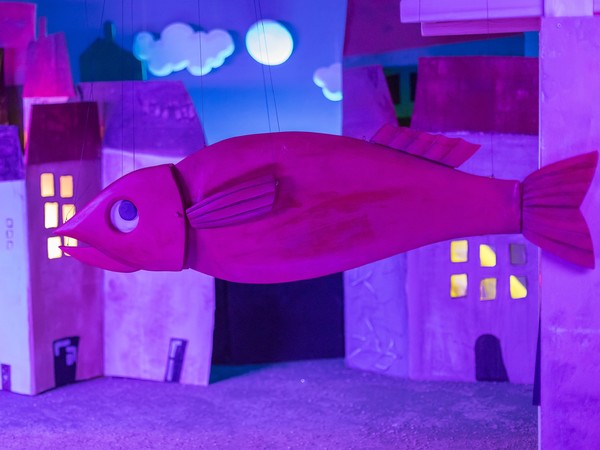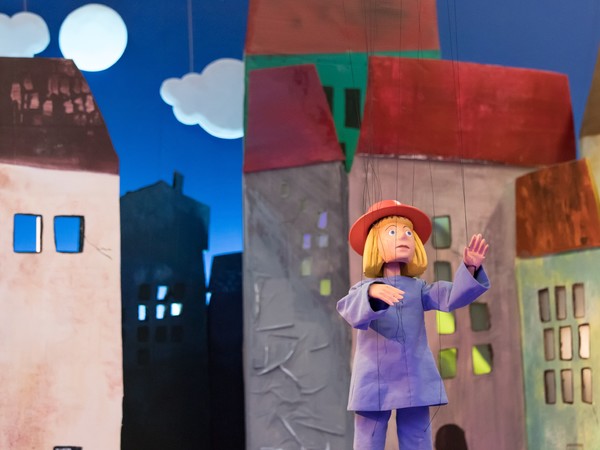Peregrin and the Giant Fish, A puppet opera. Music by Andrea Melis, text by James M. Bradburne, directed by Francesco Fei, puppets by the Carlo Colla & Sons Company – Grupporiani Association. Backstage images.
“A crazy project” like this James Bradburne, director of the Brera Art Galleryhe describes Peregrin and the Giant Fishthe film of which he is the author and which will be presented to the Milanese public on 26, 27, 28 December in the cinemas of the Anteo circuit (ANTEO Palazzo del Cinema and CITYLIFE Anteo spazioCinema), while from 30 December it will be available to the general public on BreraPlusthe streaming platform of the Brera Art Gallery.
It is certainly an unconventional and visionary film, which fully bears the stamp of its author. One immediately thinks that it will be difficult to accept the day when James Bradburne will have to leave his office at Brera. Within seven years, he conquered the public and his collaborators with the power of his overview and insight.
Peregrin and the Giant Fish is a tale set to music that has the Peregrin puppet as its protagonist traveling towards a better world on the back of a goldfish, and is inspired by the illustrated fable that Tom Siedmann-Freud published in 1923.
The work reads on several levels, revealing the complexity of Bradburne’s gaze on the museum’s mission: it is a declaration of love for children’s creativity, but at the same time a tribute to his predecessors. The plot of the work unites through a common thread the visionary inspirations of the famous directors who guided the Pinacoteca throughout the twentieth century, amid happy discoveries and cultured references.
Peregrin and the Giant Fish follows the collaboration between the director Frank Russoli and the artist Bruno Munari to create workshops for children, wink at the will of Fernanda Wittgens to make Brera a “living museum”, pays homage to the passion of Conrad Ricci (director at Brera from 1898 to 1903) for puppets as an expression of innovation and creativity.

An unhappy Peregrin leaves his black and white world and awakens in a utopian and colorful island where money is unknown, where everyone gets what they need and works together for the common good. A message of hope suitable for instilling new lifeblood into souls dejected by the recent pandemic and war.
Written at a complex moment in German history, at the time of the Weimar Republic, when inflation was skyrocketing, the flu pandemic just ended and the Great War just ended. Peregrin and the Giant Fish reflects the dream of a better world.
The illustrated book bears the signature of Martha Siedmann-Freud, the granddaughter of the father of psychoanalysis who as a teenager boldly made the decision to call herself Tom, aware that being a woman represented a disadvantage for her career. Passionate Zionist: Tom Siedmann-Freud had a vision of dreams and utopias, fueled by a great tenderness that he poured into his stories for children.
“In general, if a book is just for children, it’s not a good book,” says James Bradburne. And in fact Peregrin’s adventure is not a childish work nor a reduction of complexity as Disney usually does. “It is the celebration of a new renaissance for puppets. Great writers and directors in the 1920s made use of puppets to give an abstract form to emotions and to create a theater of ideas and symbols. They are not just a vehicle for children, puppets are a symbol of the theatre”.
The production, the result of an intense collaboration with Andrea Melis for the music, Francesco Fei for the direction and the company Carlo Colla & Figli – Grupporiani association for puppets, should also be understood as a new way of making a museum. “Since September 2020, the business model of the Pinacoteca di Brera has moved from tickets to subscriptions” adds Bradburne. “Today the Brera Plus online platform is much more than Netflix and has to feed itself with new projects. Brera Plus is our museum when the building is closed. It is the Pinacoteca outside the museum and the works in its collection”.

“It’s a journey that has crossed many things” says Andrea Melis who worked alongside Clive Britton, artistic director of the music project. The idea of creating a film from the story of Freud’s niece that was an opera and at the same time a fairy tale for adults and children arose in conjunction with the performance of Schubert’s Winterreise in April 2022 in the Sala Maria Teresa of the Braidense Library in Brera. “The war in Ukraine had just begun and there were many suggestions. There were various writes and rewrites, because we didn’t want to make a play for children. It is a little opera which is also a journey into the music of the 1900s. The music is confronted with shaped images, the puppets are in fact angular creatures. An attempt has been made to give a sound configuration to colour. Peregrin’s is a journey contrary to that of Orpheus who had descended from the light into hell. Peregrin is a reassuring character.”
“It was an unmissable opportunity” adds Franco Colla. “We worked by subtraction. The fixity of the faces of the puppets had to bring the sculpture and the light back to the graphic sign of Tom Siedmann-Freud’s illustration.”
An ambitious adventure that represents a new way of thinking about the museum in a different and uncommon way.

